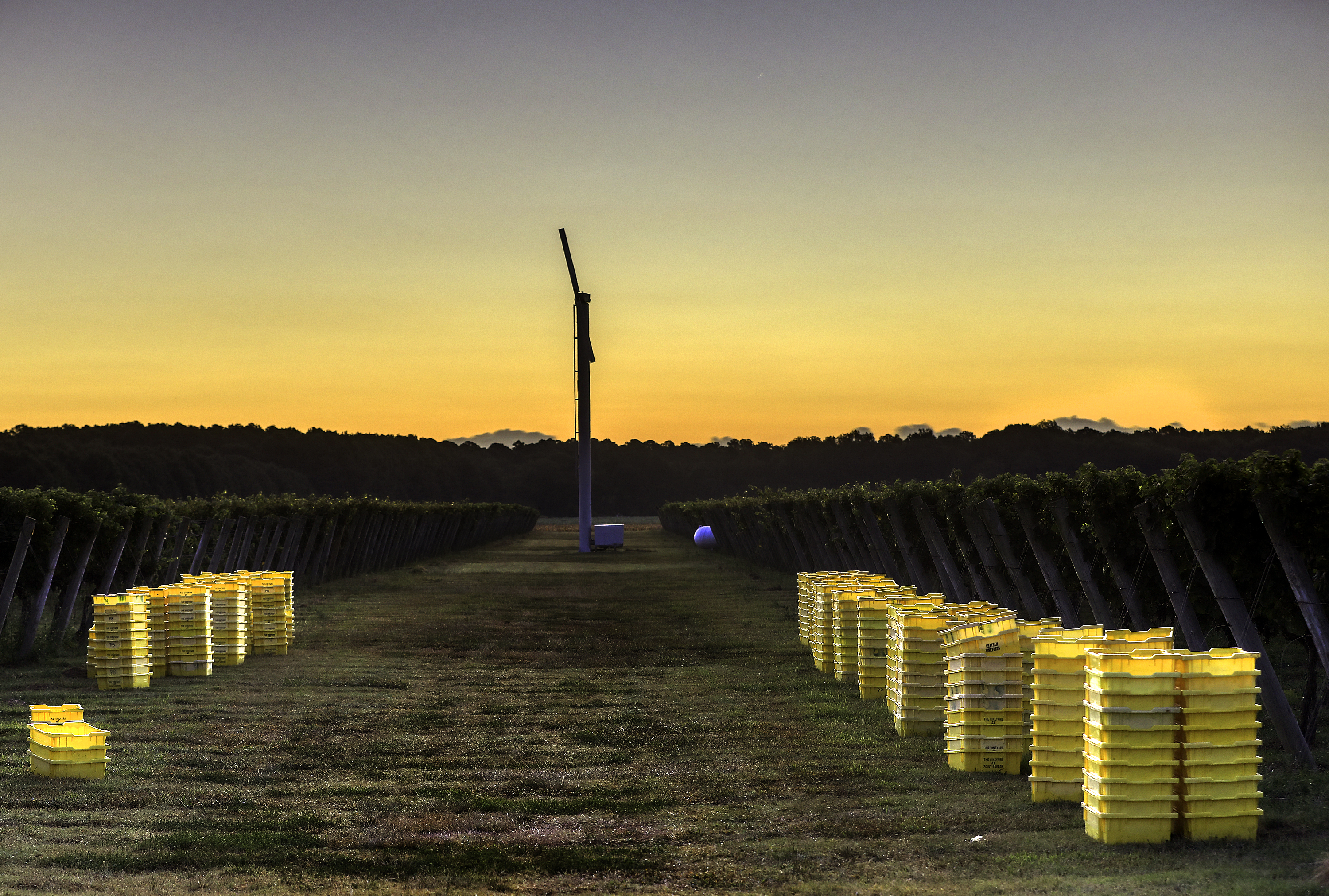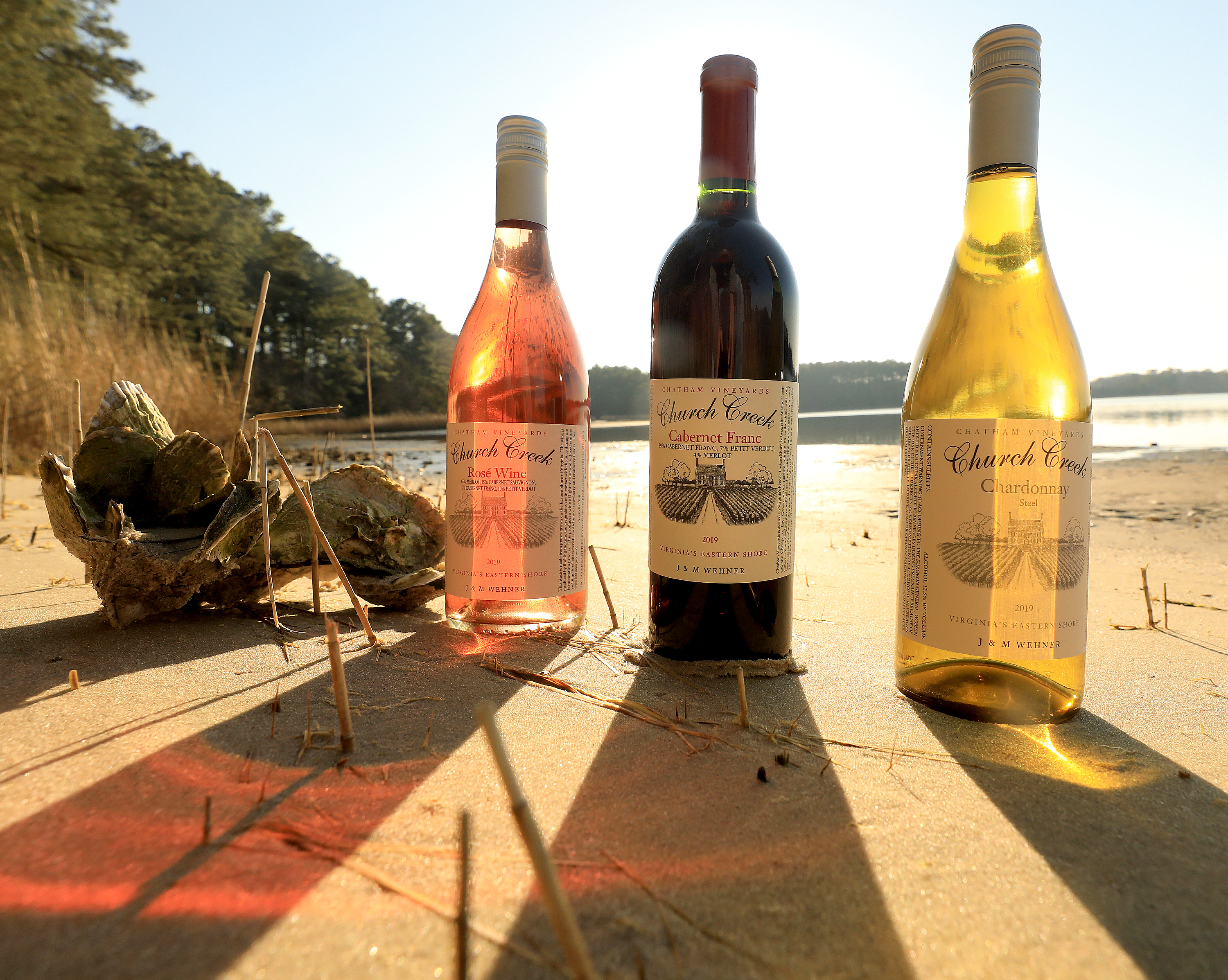Blog
Blog
Location, location, location.
No one would confuse Machipongo, Virginia, home to Chatham Vineyards at Church Creek, with California’s Napa Valley.
Yet the uniqueness, the distinctions in the soil and topography in this Eastern Shore nook, make it an intriguing place to grow grapes, something Chatham vintner Jon Wehner has done since 1999. Jon prefers the term vintner to winemaker because of the minimalist style that defines Chatham wines.

“I’m pretty minimalist,” he says. “I appreciate what’s simple.”
Jon underscores not one but 100 things affect the taste of what’s in the bottle, but among the most important is something he doesn’t control.
Wine, of course, reflects its terroir.
One of the key difference makers that distinguishes Chatham dates back 35.5 million years when a bolide, or what we might call a comet or meteor, slammed into the Atlantic Ocean, disrupting every form of life. Water, sediment and shattered rock were cast into the atmosphere from the impact. A mega tsunami was triggered and rushed out across what is now Virginia, obliterating everything in its path. As fast as it rushed out, the water and debris rushed back in to fill the 50-mile wide crater created by the impact. Following this event, the impact crater was buried by additional sedimentary beds and seawater trapped between the debris particles.
“The Eastern Shore didn’t exist back then but when it hit, everything in the entire Mid-Atlantic region was obliterated,” says Curt Smith, Deputy Director of the Middle Peninsula Planning District Commission. Smith, who grew up in nearby Wachapreague in Accomack County, holds graduate and undergraduate degrees in coastal geology and environmental science.
“It was a cataclysmic event,” he says. “Our climate at the time when this happened was a rainforest climate. As soon as that tsunami went out, it came back in and filled up the massive hole that underlies most of southeastern Virginia.”
Ground zero? Roughly 5 miles south of where Chatham Vineyards is today.
The tumbled mix of rocks and debris that filled that hole evaporated any freshwater and left behind a high salinity brine. “About 1,000 feet of sediment has since deposited atop the crater,” Smith says. “That 1,000 feet of sediment is what we recognize today as the Eastern Shore.”

Those sediments are rich in shell deposits and buried underneath the Eastern Shore. The effects linger today, affecting the acidity of the water, the chemistry of the groundwater and the grapevines planted at Chatham Vineyards.
The rootstocks feed on the calcified marine deposits that come from layers of ancient shell in the soil. In addition to the sediments beneath your feet, the Eastern Shore has a unique favorable microclimate due in part to proximity to the tidal waters of the Chesapeake Bay and Atlantic Ocean.
The wine that best expresses Chatham Vineyards, the iconic Steel Chardonnay, is the wine Jon does the least to. Wine writers including Steven Spurrier, Oz Clarke and Jancis Robinson have highlighted its uniqueness.
“You have to ask yourself why and it’s that minerality, that saline quality, along with the first-generation French clones we used to start this vineyard,” Jon says. “Certain varietals allow expressiveness better than others. The Steel Chardonnay reflects the climate here as does our Cabernet Franc. The roots are getting residual effects from the marine deposits in the soil, and we know you are what you eat.”
It's humbling to know that after 25 years of grape growing, Chatham wines continue to be heavily influenced by location and a historical event that literally shaped the region and the Chesapeake Bay.
“Our vineyards produce distinct site-expressive wines,” Jon says. “The Steel Chardonnay and our Cabernet Franc help clarify what we’re doing here as grape growers. It highlights the potential of this area. After more than two decades, I can say the wines are better than I anticipated in terms of what this location can deliver.”

